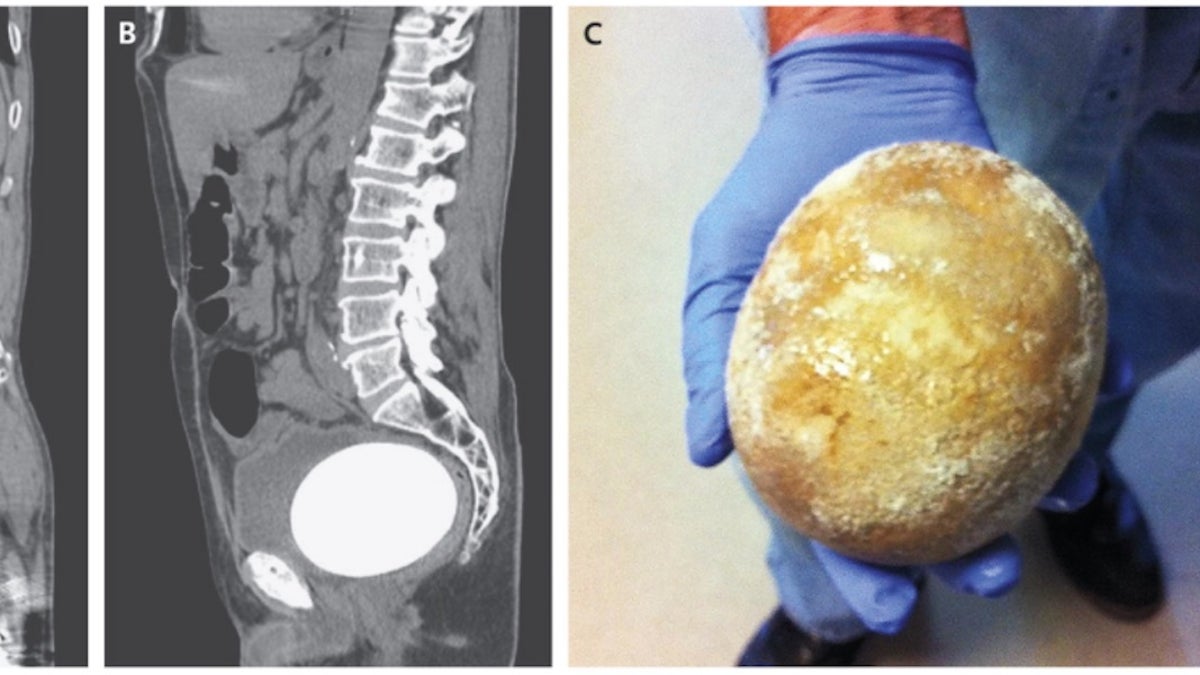
The panel on the left shows a scan of the man's abdomen. The middle panel shows the man's abdomen from the side, and the panel on the right shows the egg-shaped neobladder stone after it was surgically removed. (The New England Journal of Medicine ©2017)
When a man in California went to the hospital because of bladder problems, doctors found a large reason for his pain: a mineral stone nearly the size of an ostrich egg, according to a new report of the case.
The 64-year-old man went to the emergency room because he had pain in his left side and trouble urinating. His doctors found an egg-shaped bladder stone that weighed a whopping 1.7 lbs. (770 grams) and measured 4.7 inches by 3.7 inches by 3 inches (12 by 9.5 by 7.5 centimeters), according to the report. (For reference, a typical ostrich egg weighs about 3 lbs., or 1,360 grams.)
TEEN WITH 'RAPUNZEL SYNDROME' DIES FROM EATING HER OWN HAIR
Bladder stones are mineral masses that form in the bladder. In some cases, the stones are too small to be seen with the naked eye, but in others, the stones can be quite large, reaching an inch or more in diameter. According to Guinness World Records , the largest bladder stone was 7 inches long, 5 inches thick and 3.7 inches tall (17.9 by 12.7 by 9.5 cm), and weighed 4.2 lbs. (1.9 kg).
CT scans of the man's adbomen also revealed another, much smaller stone in the man's left ureter, which is the tube that carries urine from the kidneys to the bladder, according to the report, which was published today (Sept. 6) in The New England Journal of Medicine .
The doctors who treated the man noted that he'd had invasive bladder cancer more than a decade before he developed the stones. At the time, surgeons needed to remove his bladder, and they constructed what doctors call a "neobladder" out of segments of the man's intestines. Like a regular bladder, the neobladder is connected to both the ureters and the urethra, which is the tube through which urine exits the body, according to the National Institute of Diabetes and Digestive and Kidney Diseases .
Using part of the intestines to create a neobladder can increase a person's risk of developing stones, the authors wrote.
COULD RARE BRAIN-EATING AMOEBA THRIVE IN IRMA'S AFTERMATH?
The man had surgery to remove the stone from his bladder , and doctors used a laser to break up the stone in his left ureter, according to the report. The man had no problems after his surgery, though doctors are continuing to monitor him in case new stones form.
Originally published on Live Science .
